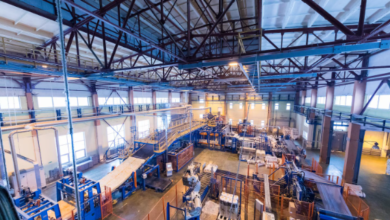Construction Hoist Spare Parts: A Critical Asset for Safe and Efficient Vertical Transport

In the dynamic and demanding world of construction, time and safety are two currencies no project can afford to waste. Amid towering cranes, scaffoldings, and concrete mixers, one often-underestimated machine plays a vital role — the construction hoist. Whether it’s moving workers or hauling tons of material, these vertical lifts are essential. But no machine, no matter how advanced, can function optimally without reliable, well-maintained components. This is where construction hoist spare parts enter the spotlight.
This detailed article explores the types, functions, benefits, materials, maintenance, and sourcing of construction hoist spare parts. Whether you’re a site engineer, safety officer, or procurement manager, understanding spare parts isn’t just technical — it’s strategic.
Understanding Construction Hoists: The Vertical Backbone of Modern Projects
Construction hoists, also known as man and material lifts, are temporary elevator systems used in construction environments to move personnel and building materials vertically. Commonly installed along the facade of high-rise buildings, these hoists can reach hundreds of meters and carry several tons per trip.
However, the real strength of a hoist isn’t just in its lift capacity or brand name — it’s in the construction hoist spare parts that make up the system. Each component contributes to the performance, safety, and lifespan of the equipment.
See also: How Proprietary Firms Fit Into the Future of Business Finance?
Gearboxes and Transmission Systems
- Purpose: Transmits power from the motor to the hoisting mechanism with regulated speed and torque.
- Spare Parts:
- Gears and pinions
- Shafts
- Bearings
- Seals
- Importance: Gear damage can lead to unstable lift movements or complete failure.
Rack and Pinion Mechanism
- Purpose: Most construction hoists use this system for vertical motion control.
- Spare Parts:
- Pinion wheels
- Rack sections
- Bolts and fasteners
- Importance: Wear and tear on racks or pinions directly affect lift stability and alignment.
Cage Components
- Purpose: The platform or cage transports workers and materials.
- Spare Parts:
- Flooring sheets
- Guardrails and doors
- Guide rollers
- Door locks
- Importance: Damaged cages pose serious safety risks. Regular inspection and replacement parts are essential.
5. Braking Systems
- Purpose: Ensures the hoist stops and holds position, especially in emergencies.
- Spare Parts:
- Brake shoes
- Brake solenoids
- Friction pads
- Brake discs
- Importance: Failure here can lead to uncontrolled descent — often fatal. Keeping high-quality spare brake components is non-negotiable.
6. Electrical and Control Panels
- Purpose: Interface between operator and machine. Manages all lift functions.
- Spare Parts:
- Control circuit boards
- Switches and buttons
- Emergency stop devices
- Fuses, relays, and contactors
- Importance: Faulty electrical components can lead to system shutdowns or erratic behavior.
Materials Used in Manufacturing Spare Parts
The longevity of a construction hoist is only as good as the quality of its spare parts. High-performance materials ensure durability under tough site conditions.
| Component | Material |
| Gears & Pinions | Heat-treated alloy steel |
| Brake Pads | Asbestos-free composite |
| Electrical Wiring | Copper core with flame-retardant insulation |
| Rollers | Polyurethane, nylon, or cast iron |
| Rack & Mast | Galvanized or powder-coated steel |
Using cheap or incompatible materials can lead to part failure, accidents, or entire system breakdowns.
Common Issues with Hoist Parts and Troubleshooting
Every construction hoist operator encounters issues — the key is in how quickly and effectively they are resolved. Spare parts are critical for this.
| Problem | Likely Faulty Part | Recommended Spare Part |
| Hoist won’t start | Control panel or fuse | Replacement fuses or switch |
| Jerky movement | Worn guide rollers | New rollers and bearings |
| Cage doesn’t stop | Faulty limit switch | New limit switch |
| Burning smell | Overloaded motor | Replacement motor or brake pads |
| Excess noise | Damaged gear | Gearbox or pinion gear replacement |
Maintenance Strategy for Spare Parts
Effective use of construction hoist spare parts begins with a proactive maintenance plan:
- Inventory Management
- Keep essential spares on site: motors, brakes, limit switches.
- Store parts in dry, temperature-controlled environments.
- Scheduled Inspections
- Weekly and monthly inspections for wear-and-tear.
- Use diagnostic tools to monitor motor load and vibration.
- Log Bookkeeping
- Record part replacements, part serials, and maintenance timelines.
- Helps identify recurring failures and plan upgrades.
- OEM vs. Aftermarket
- Prefer original spare parts from hoist manufacturers for critical components.
- Use verified aftermarket parts only when tested and certified.
Choosing the Right Supplier for Construction Hoist Spare Parts
Not all spare parts are created equal. A reliable supplier ensures:
- Availability: Quick delivery of in-stock parts.
- Compatibility: Parts that fit your hoist model precisely.
- Certification: ISO or CE-certified parts meet global standards.
- Support: Technical assistance and after-sales service.
Avoid unbranded or poorly reviewed suppliers, especially for critical parts like brakes, motors, or racks.
Innovations in Spare Part Technology
Modern construction sites demand smarter systems. New technologies are transforming how hoist parts are designed and maintained:
- Smart Sensors: Detect part wear and send alerts before failure.
- 3D Printed Spares: Fast, custom-made components when stock is unavailable.
- Remote Diagnostics: Apps that allow off-site engineers to check hoist health.
- Eco-Friendly Materials: Sustainable polymers and non-toxic coatings.
As the industry moves towards automation and green construction, spare parts will also evolve.
Conclusion: Spare Parts Keep the Industry Moving
Every towering skyscraper and massive industrial project owes part of its success to a construction hoist. And at the core of these systems are the often-overlooked heroes — construction hoist spare parts. From safety to productivity and from cost savings to compliance, the right parts can make or break a project.
Investing in quality spares, adopting a preventive maintenance culture, and working with reliable suppliers will ensure your hoist systems never stop when you need them the most. After all, in construction, every second counts — and every part matters.



